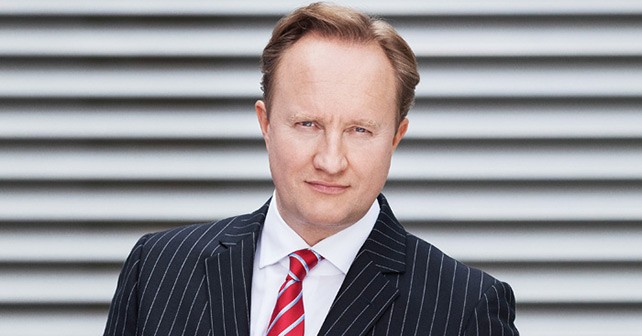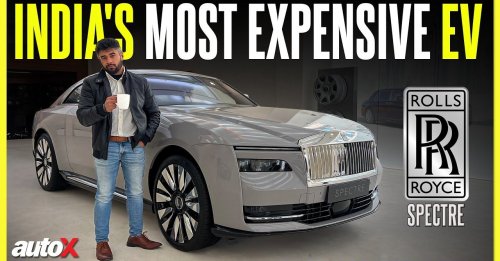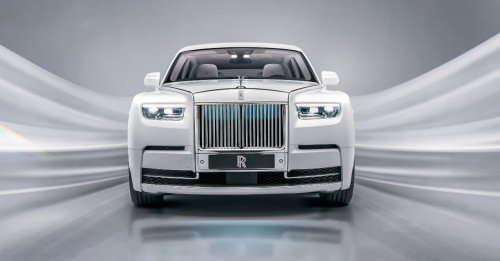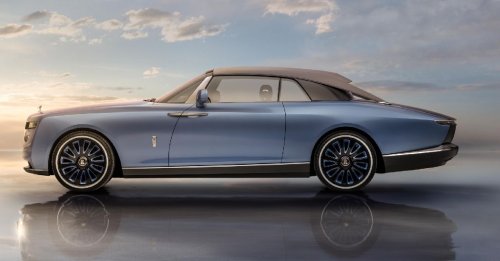We sat down with Giles Taylor, Director of Design, Rolls Royce, as the Ghost Series II was showcased, to understand the future design philosophy of the brand.
What’s the future of Rolls-Royce design?
Modernity, purity, and a certain level of expressiveness as well. Formality will still be part of our recipe if you like, because we are a formal brand. But I think we can introduce a level of expression to our design, which energizes our design language. But I come back to modernity – we are a modern brand! My challenge, with my team, is to deliver striking modern design – so I say that word very deliberately. Its not traditional, we’re not looking to the past for any of our future solutions. We are creating a very forward-looking sense of design for our future products.
Is that difficult to do? Do you have a lot of purists who want you to stick with existing themes or look to the past?
It’s not difficult, because we’ve got such a rich history. And that’s not to say that we use history to create the future – but it’s an inspiration box. We can look back – to say the 50’s and 60’s – and we have certain style opportunities. That era laid down certain lines for Rolls-Royce that are inimitable – that are unmistakably Rolls-Royce. Go back earlier than that, to the 20’s, and there are levels of architecture – a line quality – to Rolls-Royces that make us uniquely Rolls-Royce. So, in terms of continuing the Rolls-Royce DNA, that’s not difficult.
Any designer would relish that 110-year history. But in the sense that we now overlay it with a more modern design language – that’s just a great challenge that anybody in the modern car industry would want to have, rather than being constrained in some way. So, back to your point about purist customers – there is a responsibility to the brand that we don’t betray the loyalty of our customers in some way. We don’t want to go and break any code. At the moment, there have been very successful sales results for the brand. So, we remain true to what we are – it’s not revolution. It’s an evolution, but it’s a modern evolution.
What about the trademark grille – especially in the Phantom? With pedestrian safety and aerodynamics becoming more-and-more important, how do you incorporate that into future designs?
Good question. Personally, I love the grille. So I’m not somebody who would like to seize an opportunity to put the grille to one side. With respect to my comment on modernizing the brand, take away this very traditional emblem – this symbol of Rolls-Royce. “If you get rid of that, then guys you can modernize the brand.” I don’t believe in that. I believe that we can integrate it into the design solutions for Phantom and for Ghost. It’s who we are. It’s symbolic. We can take the edges of it slightly. I think sometimes it can be a little bit too symbolic, and I think as we modernize, we may look to ways for integrating it in a more sympathetic way. To your point about aerodynamics and pedestrian safety, that’s just one of the headaches that we have to go through. If you look at Ghost, it has a very flush grille to bumper section – there’s no big offset. And it’s my teams desire to try and keep these lovely clean, flush surfaces. As with the grille, in the face of pedestrian legislation that wants us to create big offsets for crashes at certain angles, at certain miles per hour – it’s always difficult. But I want to keep the grille. I want to keep it beautifully integrated into the front-end for any future Rolls Royce.
From your time at Jaguar, and especially working on the XJ – are there any design philosophies that carry over?
For me personally, yes I do believe that the quintessential design classics – whether it’s some of the masterpieces of architecture, or leather-ware from Coco Chanel, or Yves Saint Lauren, or ladies suits from the 1980’s – there is always a sense of beauty of line, or a distilled sense of purity to do with the construction of these design classics. And I believe that certain elements of my philosophy, in creating the exterior for XJ and XK, came down to three or four lines. I believe, you can deconstruct the car down to this minimum number of lines, and then those lines have to be very right. They can’t be half right – they have to be absolutely correctly resolved in all views. And then you have the essence of a classic, or a timeless piece of design that stands the test of time – rather than going in and out of fashion. And that’s the bedrock for Rolls-Royce. We don’t want to pander to fashion. Some of the brands that you see here are working on these reduced lifecycles, so they have to do something that connects immediately – and then seven years later, it has to be refreshed or redesigned. We believe in a sense of classical purity that stands the test of time.
Speaking of timeless design, there have been some renderings of a Rolls-Royce SUV that has been doing the rounds. How do you create an SUV and still maintain the timelessness of Rolls-Royce design?
There have been no sketches or renderings that have come from us – so it’s pure speculation on the part of the press. As was announced by our CEO, we are looking at the possibility of that vehicle being potentially relevant to our brand in the future. And I would say, as a design chief, its quite a complex brief to understand how that kind of vehicle would embody the essence of Rolls-Royce – which is elegance, glamour, and a certain level of cool sophistication when faced with the more functional attributes of an SUV. It’s not obvious, so the designers would treat that as a big challenge. It’s something that we’re contemplating, but we haven’t given any great amount of time to designing it in the studio.
























Write your Comment